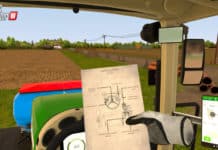Last Update on July 10, 2025
Cosmodread isn’t your typical space adventure. Developed by White Door Games (the minds behind Dreadhalls), it throws you into a dying, haunted spaceship. Alone. With an oxygen supply draining about as fast as your courage.
The concept is brutally simple: explore, survive, and pray that the next door doesn’t unleash something slimy and screaming. The roguelike structure keeps each run unpredictable but the tension? That never goes away.
Where Cosmodread truly shines is in its atmosphere. No cheap jump scares, no over-the-top explosions. Just endless corridors, unsettling noises, and the crushing weight of solitude. In VR, the effect isn’t just immersive, it’s surgical. You’re not playing a game. You’re suffocating inside it.
Headsets Compatible with Cosmodread
Cosmodread is available on several VR platforms, making it fairly accessible for anyone craving a good dose of deep-space despair:
- Meta Quest 1, 2, 3, and Pro (via native store or Air Link)
- Oculus Rift and Rift S (PC VR)
- SteamVR (Valve Index, HTC Vive, Oculus via PC, etc.)
- PSVR 2 (recently ported for Sony’s headset)
The game runs natively on standalone Quest headsets — an impressive feat given the dense, oppressive atmosphere it delivers and is optimized for PC VR setups through Rift or SteamVR. On PSVR 2, it benefits from a modest but welcome graphical update.
Gameplay: Surviving the Unexpected
In Cosmodread, survival isn’t about brute force or luck it’s about vigilance, resource management, and constantly asking yourself: “Do I really want to open that door?”
Each run drops you into a procedurally generated ship where rooms shift, paths are unpredictable, and there’s no map to hold your hand. Every step is a decision. Every detour could be your last.
At the core of the gameplay is resource management. Oxygen is limited, weapons are rare, and every item you find has weight. Finding a gun feels great until you realize it only has one bullet. Cosmodread isn’t about feeling powerful; it’s about clinging to survival by the thinnest margin.
Crafting is simple but crucial. Scattered throughout the ship are fabrication stations where you can cobble together whatever you can find a cable here, a circuit board there hoping the end result is something that keeps you alive a few more minutes.
And then there are the enemies. They’re not just decorations. Some lurk, some hunt, and some just… appear. In VR, they’re not simply on screen, they’re in your personal space.
Sometimes, the smart move isn’t to shoot, it’s to run, hide, or simply freeze and pray they don’t see you.
VR Atmosphere: Fear Inside the Headset

Where Cosmodread truly hits hard is in sensory immersion. Forget flashy cinematics or over-the-top effects here, fear is lived firsthand, in heavy silence, broken only by creaking metal and sudden blackouts.
The sound design is an absolute masterclass in psychological torture. Every noise is spatialized: footsteps echoing to the left, a faint breath to the right, something vibrating just above you. The headset doesn’t just put you inside the ship, it forces you to listen to the danger closing in. And once you hear it, you’re already too late.
Visually, it’s stripped-down, sometimes even crude but it works. Narrow corridors, worn-out industrial textures, the suffocating vibe of a dying station. That minimalist look amplifies the dread: everything looks functional, but feels dead or contaminated.
And because it’s VR, every physical action matters. Turning a door handle, stepping forward, or ducking your head feels different when it’s your real body moving. There’s no screen between you and whatever’s lurking on the other side.
Replayability & Progression: Dying Smarter
In Cosmodread, dying isn’t failure, it’s part of the plan. Most runs end badly (think “torn apart in a maintenance room”) but every death teaches you something. You die, you learn, you come back just a little stronger.
The game follows a light roguelike structure: every time you play, the ship’s layout changes, items move, monsters shift around. It keeps things fresh, even if after a few hours, some patterns start to feel familiar. The learning curve, however, stays brutal, you start out wandering like a lost rookie, and end up mapping your routes and managing your oxygen like a battle-hardened survivor.
What carries over between runs? Tools, upgrades, and sometimes modifiers that can alter your next playthrough. Enough to keep you interested, but not enough to make things feel bloated. No massive skill trees here. No endless cosmetic currencies.
Just you, your mistakes and what you learn from them.
Verdict: For Whom the Oxygen Bell Tolls
Cosmodread isn’t here to please everyone. It’s here to test your nerves not to boost your gamer ego. If you’re looking for a flashy shooter or a cinematic space epic, turn back now. This is minimalism under pressure: a slow, creeping nightmare where every step is a choice, and every silence is a threat.
What does it get right?
An incredibly rare level of immersion. Thanks to razor-sharp sound design, pure survival mechanics, and a bleak atmosphere that never feels forced, Cosmodread is one of those VR games where the headset isn’t a gimmick, it’s the entire experience.
What does it sacrifice?
Visual variety, narrative depth, and any semblance of emotional comfort. This isn’t a game you “beat” with a grin. It’s a game you survive and with each survival, you come back a little less naïve.
Recommended for:
- Fans of punishing roguelikes.
- Horror lovers who prefer slow, psychological dread.
- Players who enjoy suffering in glorious, immersive fidelity.
Avoid if:
- You get motion sickness, have a sensitive heart rate, or tend to scream uncontrollably in VR.
- You were hoping for a Dead Space VR full of big guns and explosive set pieces.











